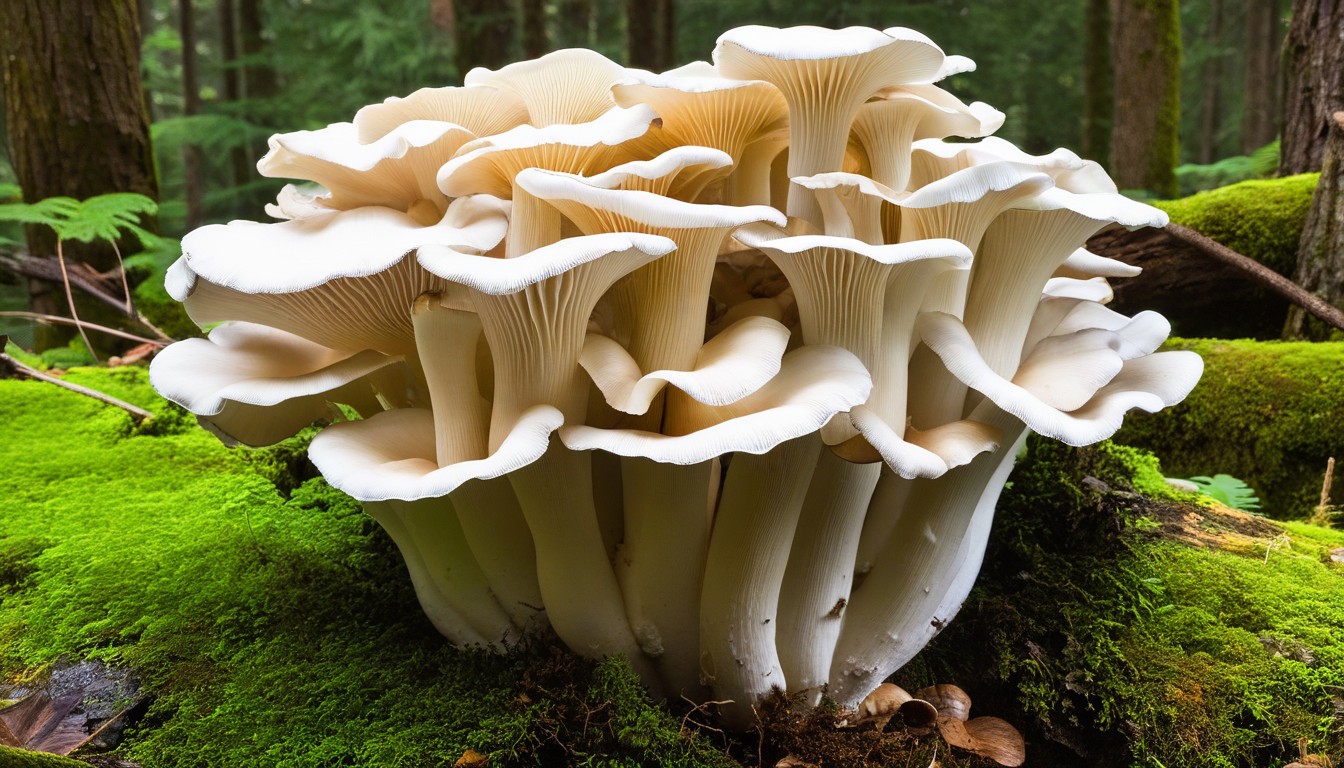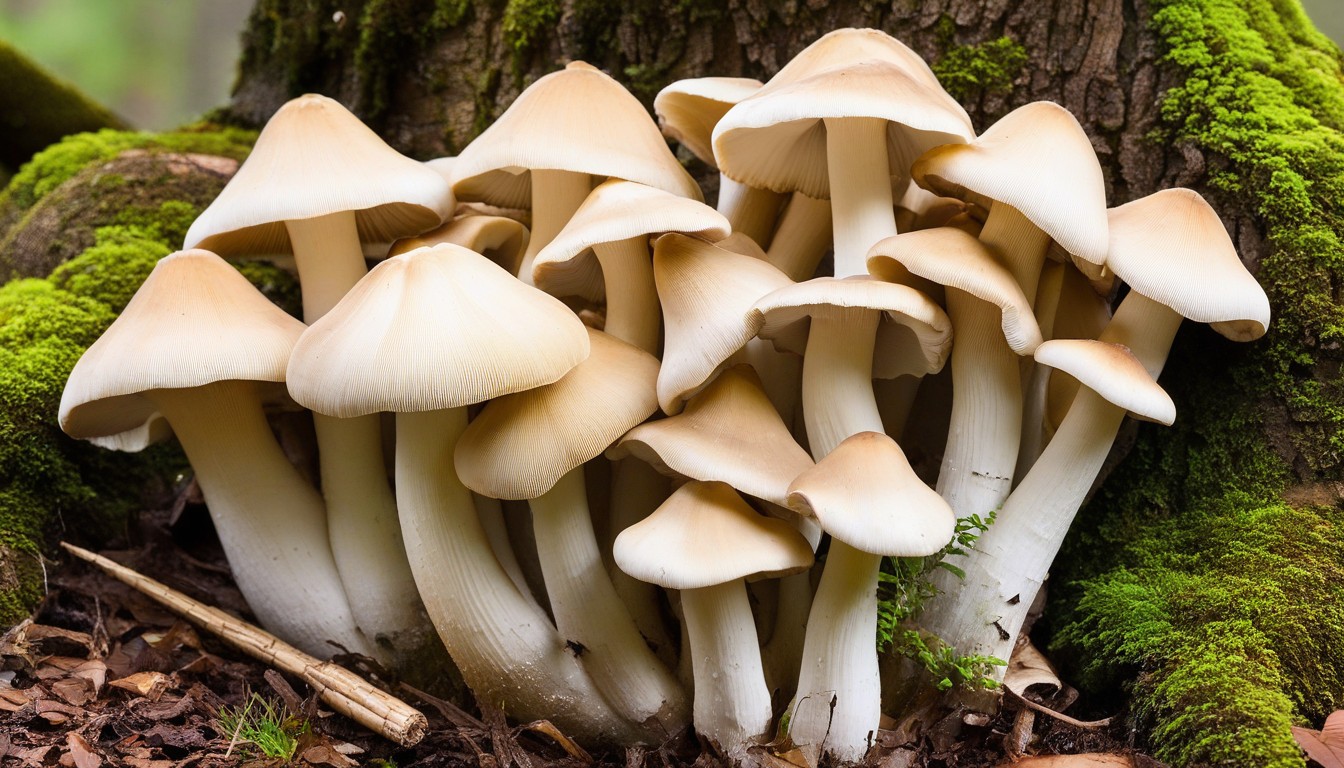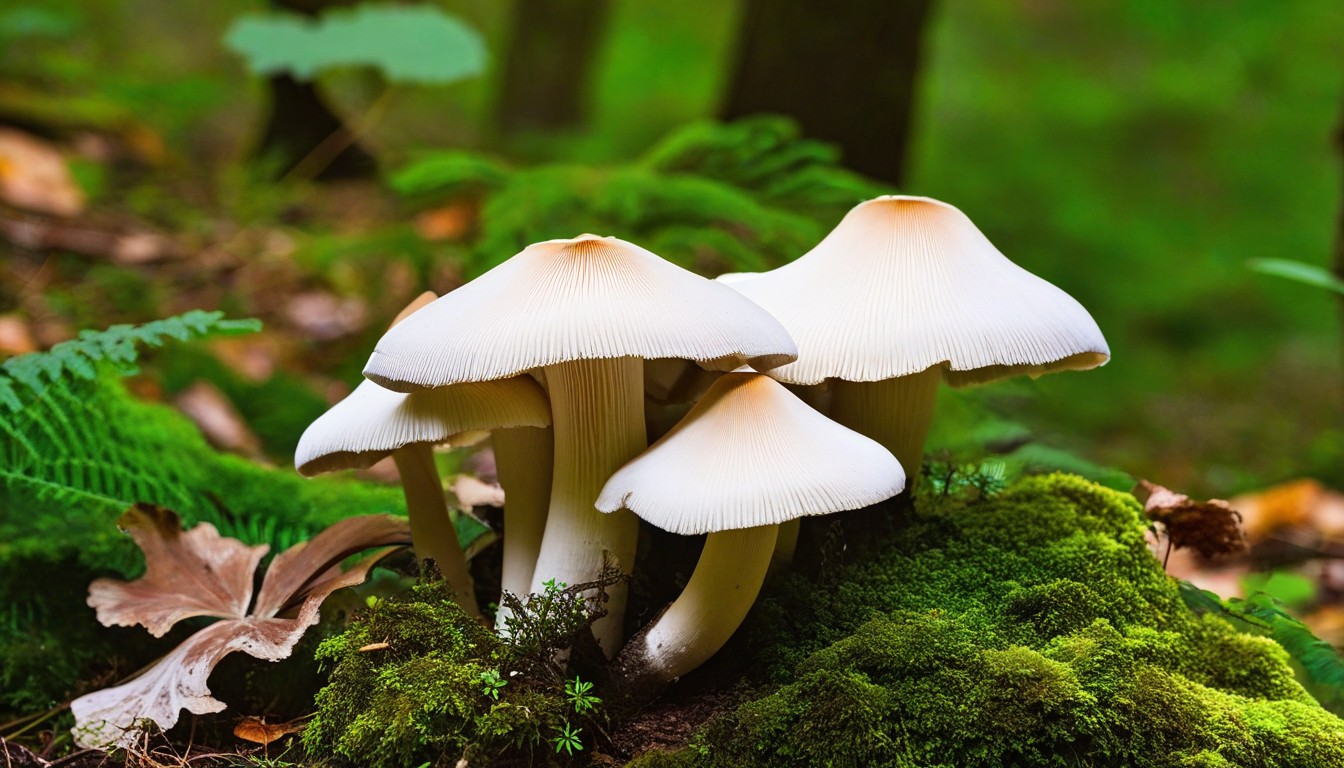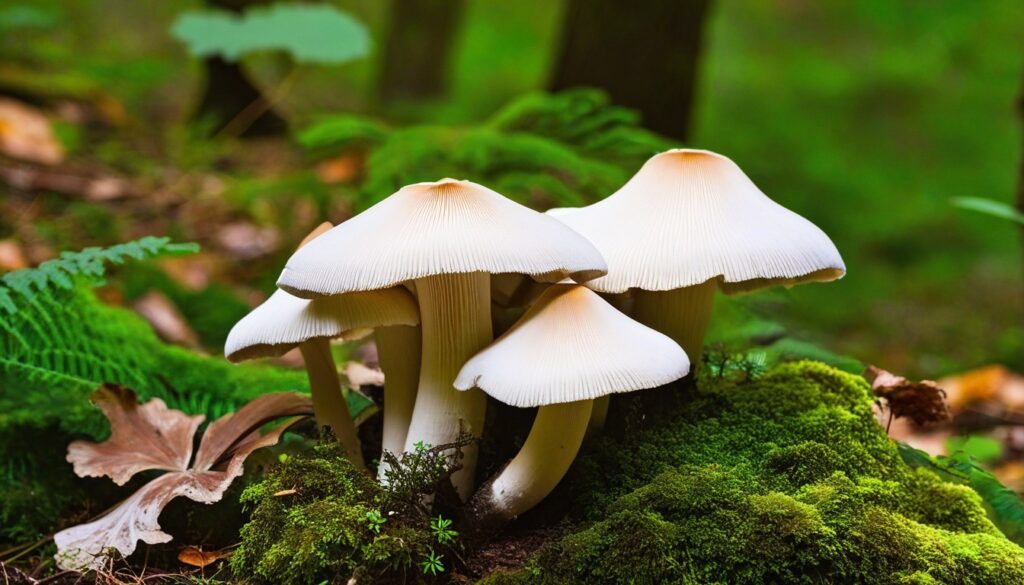If you’re a fan of oyster mushrooms, why not try your hand at growing and harvesting them yourself? Not only is it rewarding to watch these tasty fungi grow, but it’s also a fun and potentially profitable hobby. However, to ensure a successful harvest, it’s crucial to follow the right techniques and methods.
Key Takeaways
- Efficient harvesting techniques are essential for a successful oyster mushroom harvest.
- Growing your own mushrooms cuts costs and provides access to fresh produce.
- Proper preparation, identification of readiness, and careful handling are crucial for successful harvesting.
- Post-harvest care includes cleaning and proper storage for maximum shelf life.
- Sustainable harvesting practices prioritize eco-friendly methods for mushroom cultivation.
Understanding Oyster Mushrooms
Before you start harvesting your oyster mushrooms, it’s essential to have a clear understanding of these incredible fungi. Oyster mushrooms are a popular type of mushroom known for their delicate flavor and velvety texture. They’re also highly nutritious, low in calories, and rich in minerals, vitamins, and antioxidants, making them an excellent addition to any diet.
When it comes to mushroom cultivation, oyster mushrooms are relatively easy to grow, making them an excellent choice for beginners. They grow in a wide range of temperatures and prefer a humid environment, making them suitable for both indoor and outdoor cultivation.
If you’re considering growing oyster mushrooms, you have a few options. You can purchase mushroom-growing kits that come with everything you need to get started, including substrate, spawn, and instructions. Alternatively, you can choose to grow your mushrooms from scratch, starting with selecting the right substrate and spawn.
One of the most significant benefits of cultivating your own oyster mushrooms is that you’ll know exactly what went into their growth. Unlike store-bought mushrooms, which may contain harmful pesticides or other chemicals, homegrown oyster mushrooms are free from harmful substances.
Preparing for Harvesting
Before you begin harvesting your oyster mushrooms, it’s crucial to set up the right environment for them to grow. Whether you’re using a mushroom growing kit or creating your own setup, the spawn and substrate you choose will significantly impact your mushroom yield and quality.
Spawn refers to the mushroom “seeds” that you’ll need to start the cultivation process. You can purchase spawn in various forms, including sawdust spawn, grain spawn, and liquid spawn. Choose a spawn that is compatible with the substrate you plan to use.
|
Spawn Type |
Substrate Compatibility |
|---|---|
|
Sawdust Spawn |
Hardwood sawdust, straw |
|
Grain Spawn |
Grain-based substrates, coffee grounds |
|
Liquid Spawn |
Hardwood sawdust, straw, grain-based substrates |
The substrate is the material that your mushrooms will grow on. Popular options include straw, hardwood sawdust, and grain-based substrates.
Once you’ve selected the spawn and substrate, you’ll need to prepare your growing area and inoculate the substrate with the spawn. Follow the instructions carefully to ensure optimal conditions for your mushrooms to thrive.
Signs of Mushroom Readiness
Identifying when your oyster mushrooms are ready for harvest is crucial to ensure optimal flavor and texture. It’s important to note that oyster mushrooms grow fast and that their maturity and readiness for harvest can vary depending on the season and growing conditions.
However, there are several key visual cues to look for that will indicate when your mushrooms are ripe and ready:
- Size: Oyster mushrooms can grow up to 4-6 inches in diameter. Once they have reached their full size, they are ready for harvest.
- Cap Edges: As oyster mushrooms mature, their cap edges tend to curl upward slightly. This is a sign that they are ready for harvest.
- Color: The color of the oyster mushroom caps can also indicate their readiness. When they’re mature, the caps will be a vibrant, healthy shade of brown or gray.
- Gills: As oyster mushrooms mature, their gills will begin to change color from white to a light pink or yellow hue.
By paying close attention to these visual cues, you’ll be able to determine the perfect time to harvest your oyster mushrooms, ensuring the highest quality and best taste.
Harvesting Tools and Techniques

Equipping yourself with the right tools and techniques can make a significant difference in efficiently harvesting your oyster mushrooms while minimizing damage to the growing substrate.
Mushroom Harvesting Tools
One of the most important tools for mushroom harvesting is a sharp knife. A dull knife can cause damage to the substrate and mushrooms while making the process more difficult. It’s essential to use a sharp, clean knife for a smooth and efficient harvest.
Protective gloves are also necessary to prevent any contamination of the mushrooms. These gloves protect both your hands and the delicate oyster mushrooms from harmful bacteria, dust, and other elements.
Mushroom Harvesting Techniques
When harvesting the mushrooms, it’s crucial to handle them with care. Avoid pulling the mushrooms forcefully, which can damage the substrate and cause future mushrooms to grow poorly.
Instead, gently twist the stem of the mushroom at the base, so it separates from the substrate, leaving the growing medium intact. This technique ensures that the future growth of the mushrooms isn’t hindered, and that the substrate remains healthy for the next harvest.
|
Tools |
Techniques |
|---|---|
|
Sharp knife |
Gently twist the stem at the base of the mushroom |
|
Protective gloves |
Avoid pulling the mushroom forcefully |
By using the right tools and techniques, you can ensure a successful and efficient harvest of your oyster mushrooms. Remember, careful handling of the mushrooms and substrate is essential for future growth and bountiful harvests.
Harvesting Step-by-Step

Harvesting oyster mushrooms is an exciting process that requires careful handling to ensure the best quality and flavor. Follow our step-by-step guide to harvest your mushrooms like a pro:
- Approach your mushroom substrate with clean hands and a sharp knife.
- Identify the mature mushrooms by looking for visual cues such as the caps separating from the stem.
- With one hand, hold the mature mushroom near the base of the stem. With the other hand, use your knife to cut the stem at a point just above the substrate.
- Gently twist the mushroom to remove it from the substrate.
- Place the harvested mushroom in a clean basket or container.
- Repeat the process, working your way through the substrate, taking care not to damage any young or developing mushrooms.
When harvesting mushrooms, it’s crucial to handle them with care. Rough handling can damage the mushrooms and the substrate, leading to contamination and reduced yield. Remember to keep your hands and tools clean, and avoid stepping on or bumping into the substrate.
Post-Harvest Care
Congratulations! You have successfully harvested your oyster mushrooms. But your hard work doesn’t end there. Proper post-harvest care is essential to maintain the quality and extend the shelf life of your precious harvest.
Mushroom Storage
Storing your mushrooms correctly is vital to prevent spoilage and maintain their freshness. Oyster mushrooms are delicate, and their texture and flavor can deteriorate quickly if not stored correctly. Here are some tips for proper mushroom storage:
|
Storage Method |
Advantages |
Disadvantages |
|---|---|---|
|
Refrigerator |
Keeps mushrooms fresh for up to a week |
Mushrooms can become moist and slimy if not stored properly |
|
Freezer |
Extended shelf life for up to six months |
Mushrooms can become mushy and lose texture once thawed |
|
Drying |
Long shelf life, versatility in cooking |
Requires careful monitoring and can take several hours to several days |
Whichever method you choose, make sure to clean your mushrooms thoroughly before storing them. Remove any dirt or debris with a soft brush or cloth and trim any damaged areas. Avoid washing your mushrooms with water as they can absorb moisture and become slimy. Instead, wipe them gently with a damp cloth and let them air dry before storing them.
Cleaning Mushrooms
Before cooking your mushrooms, it’s essential to clean them correctly to remove any dirt or debris that could affect their flavor or texture. Here’s how to clean your oyster mushrooms:
- Trim any damaged areas or tough stems.
- Gently brush off any dirt or debris with a soft brush or cloth. Avoid washing your mushrooms with water as they can absorb moisture and become slimy.
- If necessary, rinse your mushrooms briefly under cold running water and pat them dry with a paper towel. Avoid soaking them in water as they can become waterlogged and lose their texture.
- Your mushrooms are now ready to cook and enjoy!
Following these essential post-harvest care tips will help ensure that your oyster mushrooms stay fresh and delicious for longer, allowing you to savor the fruits of your labor fully.
Troubleshooting Common Harvesting Issues

Even with proper care and preparation, harvesting oyster mushrooms can face a variety of challenges. Here are some common issues you may encounter and how to troubleshoot them.
Mushroom Diseases
If you notice any discoloration, strange spots, or unusual growth on your oyster mushrooms, it may be infected with a disease. Some common fungal diseases that affect oyster mushrooms include verticillium wilt, cobweb, and green mold.
To prevent the spread of disease, it’s crucial to remove any infected mushrooms immediately. You can also try adjusting the temperature and humidity levels in your growing environment and ensuring proper ventilation to prevent fungal growth.
Pest Control
Pests, such as mites and flies, can quickly infest your mushroom growing area and damage your crops. To prevent pest infestations, regularly inspect your mushrooms and growing substrate for signs of pests.
You can also take preventative measures, such as sealing entry points, using insecticidal soap, and implementing proper sanitation practices to limit pest access. Additionally, maintaining a clean growing area can help prevent pest infestations.
Exploring Culinary Possibilities

One of the most exciting aspects of harvesting oyster mushrooms is incorporating them into delicious meals. These versatile fungi have a pleasant, delicate flavor and a tender texture, making them an excellent addition to many recipes.
When cooking with oyster mushrooms, it’s essential to highlight their unique taste while pairing them with other ingredients that complement their flavor.
Recipes
Here are some mouth-watering recipes that feature oyster mushrooms:
Oyster Mushroom Risotto: This creamy and flavorful risotto is a classic dish that allows the mushrooms’ taste to shine. Sauté the mushrooms with shallots and garlic, then add them to the rice with some white wine, grated parmesan cheese, and fresh thyme. Stir until the rice is cooked and serve hot.
Stir-Fried Oyster Mushrooms: A quick and easy recipe that highlights the mushrooms’ texture and flavor. Sauté the mushrooms with some ginger, garlic, and soy sauce until browned and tender. Serve over rice or noodles for a satisfying meal.
Oyster Mushroom Soup: This hearty and comforting soup is perfect for colder months. Sauté the mushrooms with some onions and celery, then add chicken or vegetable broth and simmer until cooked. Add some cream and fresh herbs like thyme or parsley for extra flavor.
Cooking Tips
When cooking with oyster mushrooms, keep these tips in mind:
- Do not wash the mushrooms; gently brush off any dirt with a damp paper towel.
- Sauté the mushrooms on medium-high heat to ensure they cook evenly and do not become soggy.
- Pair oyster mushrooms with ingredients that complement their flavor, such as garlic, shallots, thyme, and soy sauce.
- Experiment with different cooking techniques, like grilling or roasting, to enhance the mushrooms’ taste and texture.
With these cooking tips and recipes, you can transform your oyster mushroom harvest into a delectable culinary experience.
Sustainable Harvesting Practices
As mushroom cultivation continues to rise in popularity, it’s crucial to prioritize sustainable harvesting practices to ensure a positive impact on the environment. The following eco-friendly practices and methods promote sustainable mushroom cultivation:
- Recycling and Composting: Instead of disposing of used substrate, consider composting it to create nutrient-rich soil for future crops. Additionally, using recycled materials, such as cardboard or newspaper, to make mushroom-growing kits can reduce waste.
- Reducing Energy Consumption: Incorporating energy-efficient tools, such as LED lights and low-energy fans, can reduce energy usage and costs.
- Using Organic and Local Resources: Utilizing organic and locally sourced materials for mushroom cultivation can reduce the carbon footprint associated with transportation and chemical fertilizers.
- Implementing Integrated Pest Management: Integrated pest management reduces the need for harmful chemicals by introducing natural predators and implementing preventative measures.
By implementing these sustainable harvesting practices, you can minimize waste and environmental impact, all while enjoying a successful and fulfilling mushroom-growing journey.
Conclusion
Harvesting your own oyster mushrooms can be a rewarding and satisfying experience. By following the techniques and tips we’ve covered in this guide, you are sure to have a successful harvest. Remember to pay attention to the signs of mushroom maturity, equip yourself with the right tools and techniques, and practice post-harvest care.
Not only can you enjoy the delicious flavors that oyster mushrooms offer, but you can also take pride in cultivating them sustainably. By prioritizing eco-friendly practices, we can ensure a positive impact on the environment and promote responsible mushroom cultivation.
Thank you for joining us on this journey to discover the art of efficient oyster mushroom harvesting. We hope this guide has inspired you to start your own mushroom-growing venture and explore the endless culinary possibilities that oyster mushrooms offer!
FAQ
What are oyster mushrooms?
Oyster mushrooms are a type of edible mushroom known for their delicate flavor and unique appearance. They are commonly used in various cuisines and are prized for their nutritional value.
How do I prepare for harvesting oyster mushrooms?
To prepare for harvesting, you need to create the right growing environment for your mushrooms. This includes using mushroom growing kits, selecting the appropriate spawn, and creating the ideal substrate for your mushrooms to grow.
How can I tell when oyster mushrooms are ready for harvest?
Look for visual cues to determine when your oyster mushrooms are mature and ready to be picked. The mushroom caps should be fully developed, and the edges may begin to curl slightly. Additionally, the spore-producing structures on the underside of the cap should be visible.
What tools do I need for harvesting oyster mushrooms?
You will need a sharp knife or scissors for cleanly cutting the mushrooms from the substrate. It’s also important to have protective gloves to avoid any potential skin irritation or contamination.
What is the best way to harvest oyster mushrooms?
To harvest oyster mushrooms, approach them with care and gently cut them from the substrate, leaving a small portion attached to aid in future mushroom growth. Avoid damaging the surrounding mushrooms or the growing substrate as you harvest.
How should I store harvested oyster mushrooms?
After harvesting, it’s important to store oyster mushrooms properly to maintain their freshness. Keep them refrigerated in a brown paper bag or a paper towel to help absorb excess moisture, and use them within a few days for optimal flavor and texture.
What do I do if I encounter problems during the harvesting process?
If you encounter issues such as mushroom diseases or pest infestations, it’s important to address them promptly. Use appropriate pest control methods and consult resources or professionals who specialize in mushroom cultivation for guidance on troubleshooting specific problems.
Can I cook with oyster mushrooms?
Absolutely! Oyster mushrooms are versatile and can be used in a variety of delicious recipes. From stir-fries and soups to pasta dishes and even vegan meat substitutes, oyster mushrooms offer a unique flavor and texture that can enhance any culinary creation.
Why is sustainable harvesting important for oyster mushrooms?
Sustainable harvesting practices help protect the environment and ensure the long-term availability of oyster mushrooms. By adopting eco-friendly cultivation methods and minimizing waste, we can contribute to the conservation of natural resources and promote a healthier planet.

